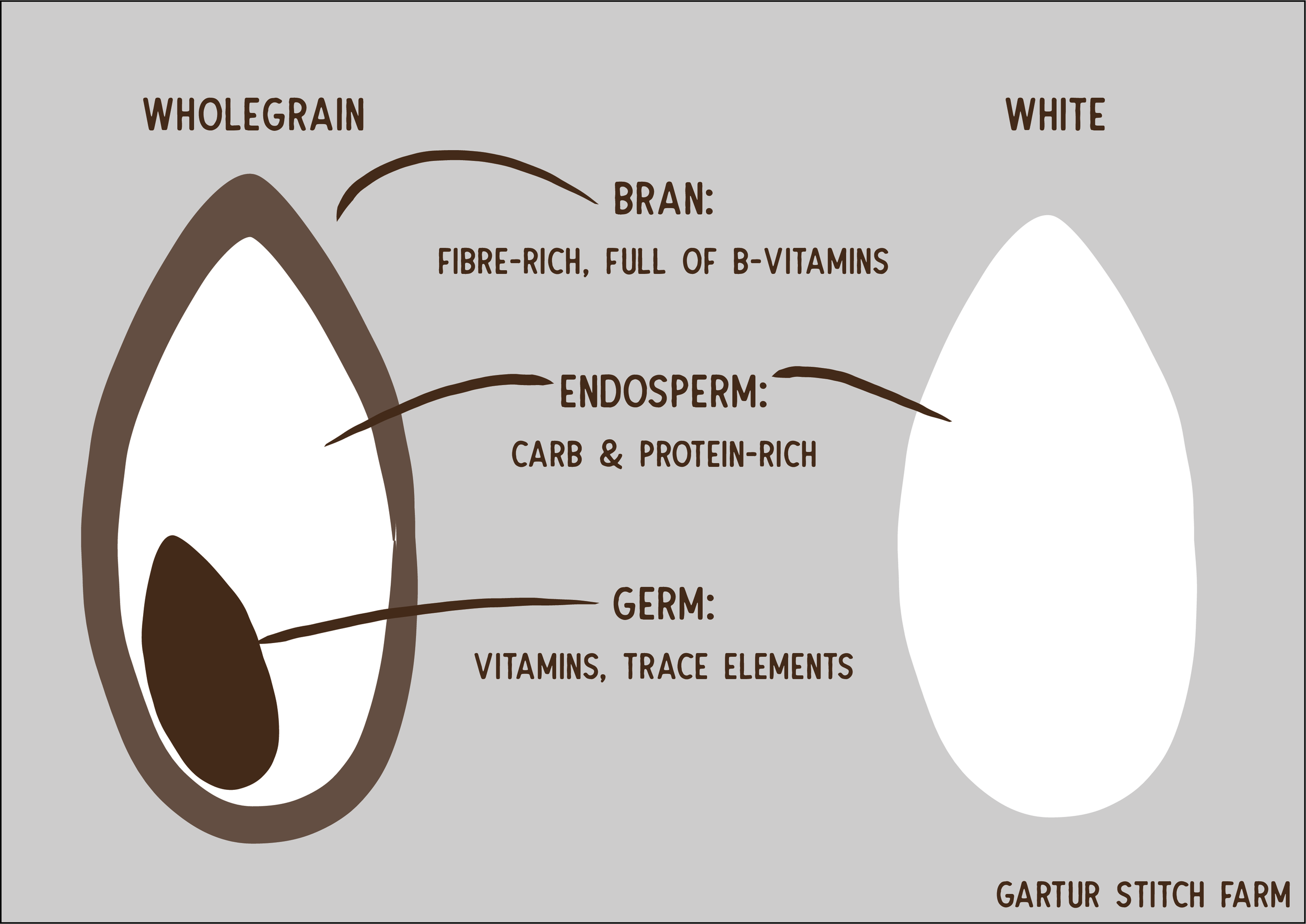Baking With Wholemeal or whole grain Flours
Whether it is for health reasons, taste reasons or shortage reasons, making the switch from a white flour to a wholemeal flour can be a bit daunting. There is nothing worse that pulling out a loaf of bread, lovingly made with wholemeal out of the oven, only to find a dense, wet mess. It can be enough to put you off, but it shouldn’t. With a few tweaks to how you work with the flour, wholemeal loaves can become a great staple in your kitchen AND help reduce food waste.
What is the difference between wholemeal/ Whole Grain vs white flour?
The difference between wholemeal flour and its white counterpart is how much of the wheat grain is used when making the flour. Wheat consists of three parts:
The bran: the outer husk - full of fibre and rich in B-vitamins
The endosperm: the inner layer, full of sugars and proteins to feed a sprouting wheat seed.
The germ: the genetic material or embryo of the wheat plant that contains lots of micro nutrients, trace elements and fats.
To produce white flour, the bran and the germ are removed, leaving just the endosperm. After grinding, the bran and endosperm are sieved out and usually disposed of as animal feed and used in the cosmetic and pharmaceutical industry.
Benefits of Wholemeal Flour
Retaining the bran and germ in your baking by using wholemeal flour has a range of benefits.
More nutrients without having to be fortified. In the UK, any white wheat flour that is milled here is required to have calcium carbonate, iron, thiamine/Vitamin B1 and Nicotinic acid added. This was to ensure that white flour has the same broad brush vitamins as wholemeal flour, but not the full nutritional make up. (The Real Bread Campaign has a great article here)
Wholemeal flours give sourdough starters’ yeasts and bacteria more to feed on. In turn, this creates a more diverse starter, which can aid digestibility of the bread.
Sourdough bread made with whole meals tends to have a more of that signature sour flavour.
Reduces food waste. When you eat whole wheat flour, you are reducing the amount of wheat wasted as part of the milling process. As wheat shortages continue, this will become even more crucial.
Tips for Baking Sourdough bread with Whole Grain Flour
Baking with whole meal flours definitely comes with a learning curve. The bran and endosperm absorb more water than white flour and thus can create a very dense bread. The bran can also cut up the long gluten chains that hold bread together, creating a weaker bread. It can be tricky to get the results you want.
My advice when starting out is to keep your wholemeal flour content down to about 20-30% of your overall flour content so that your bread retains a lighter finish and is easier to work with. As you become more familiar with your bread, feel free to create wholemeal loaves.
Some of our other tips that can help when baking with whole meal flours:
Sieve out the bran and set it aside before building your dough. Those bran bits act like little razors, chopping up your beautiful gluten chains holding your bread up. Sieve them out and set them aside until your last stretch and fold and add them back in. It helps if the bran is soaked in water before adding it back in.
Ensure you autolyse your dough. “What is that?” you ask. Put simply, it is when you mix your flour and water together on their own before adding your starter and salt. This allows the gluten to start developing and your flour to fully hydrate before full fermentation begins. Autolysis also means the bran is softer as well, reducing its impact on gluten development further down the line. King Arthur flour has a great scientific breakdown of the benefits of autolysing here.
Bake in a container. There are no sourdough police who are going to come to your house and inspect your shaping. If you are struggling to bake high-whole meal loaves that hold their shape, bake them in a loaf or cake tin. No one is going to tell on you, promise.
Do you bake with whole meal flour and have any tips to share?
Fancy trying your hand at a wholemeal loaf? Why not try our Caraway Rye recipe!


